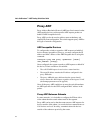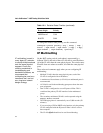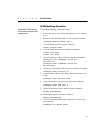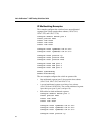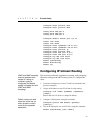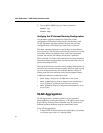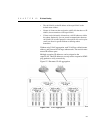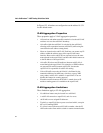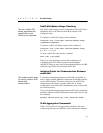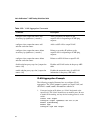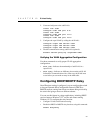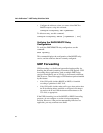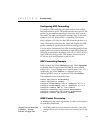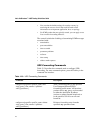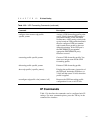
204
Intel
®
NetStructure™ 480T Routing Switch User Guide
In Figure 12.2, all stations are configured to use the address 10.3.2.1
for the default router.
VLAN Aggregation Properties
These properties apply to VLAN aggregation operation:
• All broadcast and unknown traffic remains local to the subVLAN
and does not cross the subVLAN boundary.
• All traffic within the subVLAN is switched by the subVLAN,
allowing traffic separation between subVLANs (while using the
same default router address among them).
• Hosts are located on the subVLAN. Each host can assume any IP
address within the address range of the superVLAN router
interface. Hosts on the subVLAN are expected to have the same
network mask as the superVLAN, and have their default router set
to the IP address of the superVLAN.
• All traffic (IP unicast and IP multicast) between subVLANs is
routed through the superVLAN. For example, no ICMP redirects
are generated for traffic between subVLANs, because the
superVLAN is responsible for subVLAN routing.
• Unicast IP traffic across the subVLANs is facilitated by the
automatic addition of an ARP entry (similar to a proxy ARP
entry) when a subVLAN is added to a superVLAN. You can
disable this feature for security purposes.
• IP multicast traffic between subVLANs is routed when an IP
multicast routing protocol is enabled on the superVLAN.
VLAN Aggregation Limitations
These limitations apply to VLAN aggregation:
• No additional routers may be located in a subVLAN.
• A subVLAN cannot be a superVLAN, and vice-versa.
• subVLANs are not assigned IP addresses.
• Typically, a superVLAN has no ports associated with it, except in
the case of running ESRP.
• If a client is moved from one subVLAN to another, clear the IP
ARP cache at the client and the switch to resume communication.



